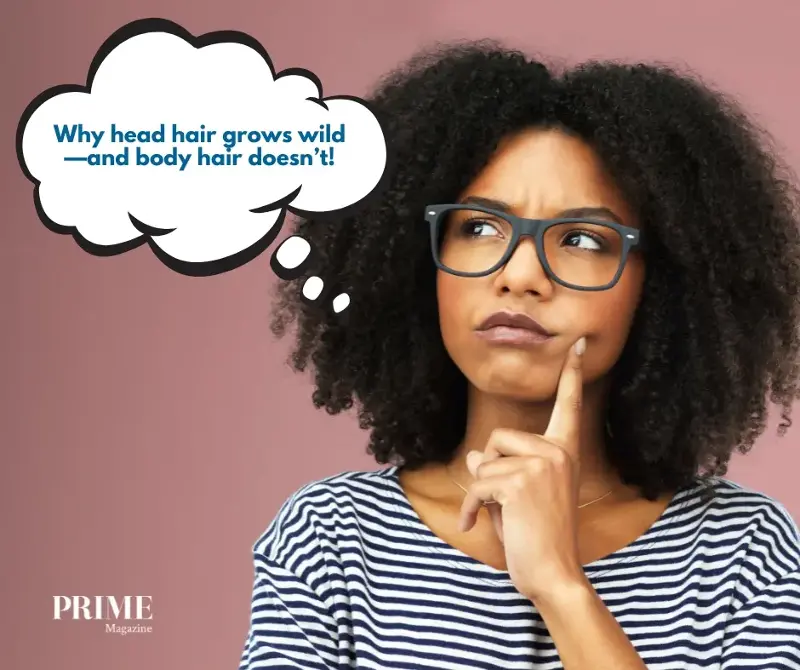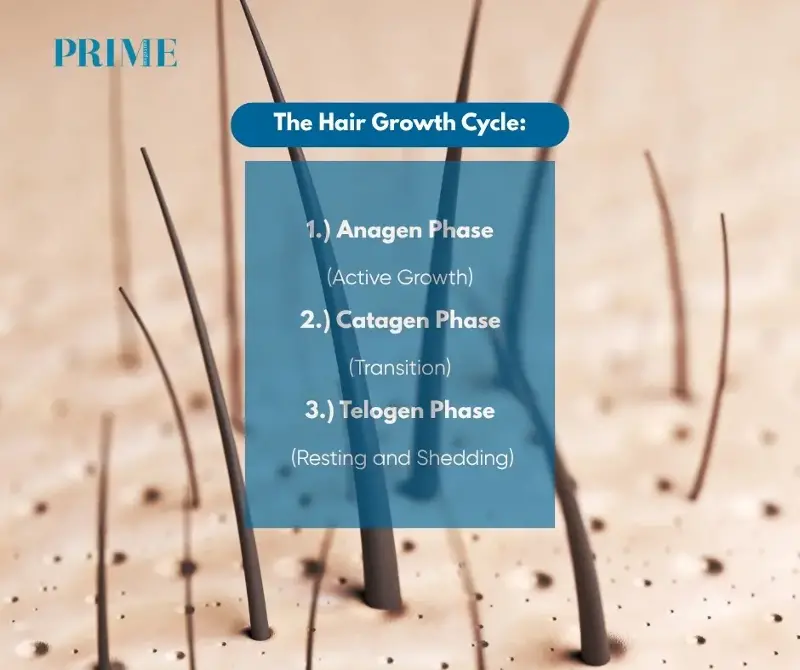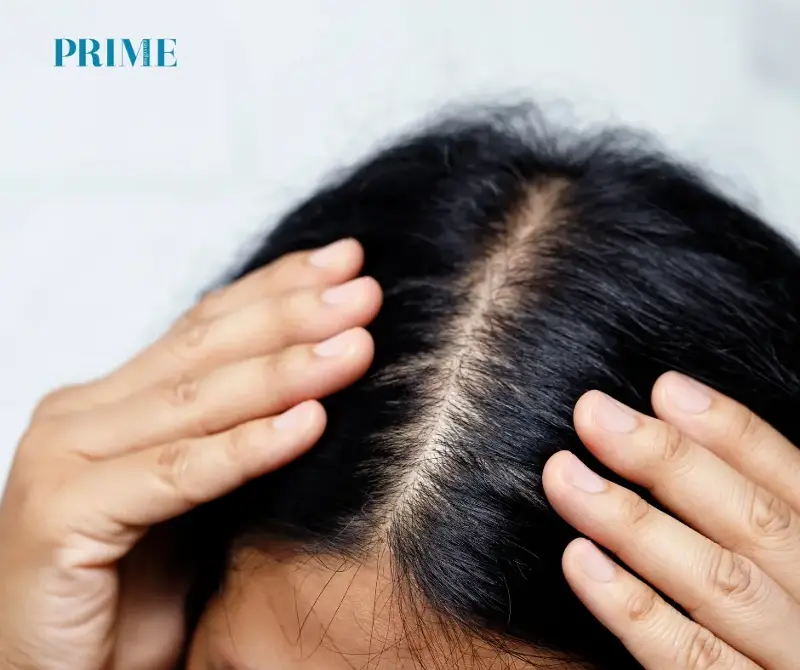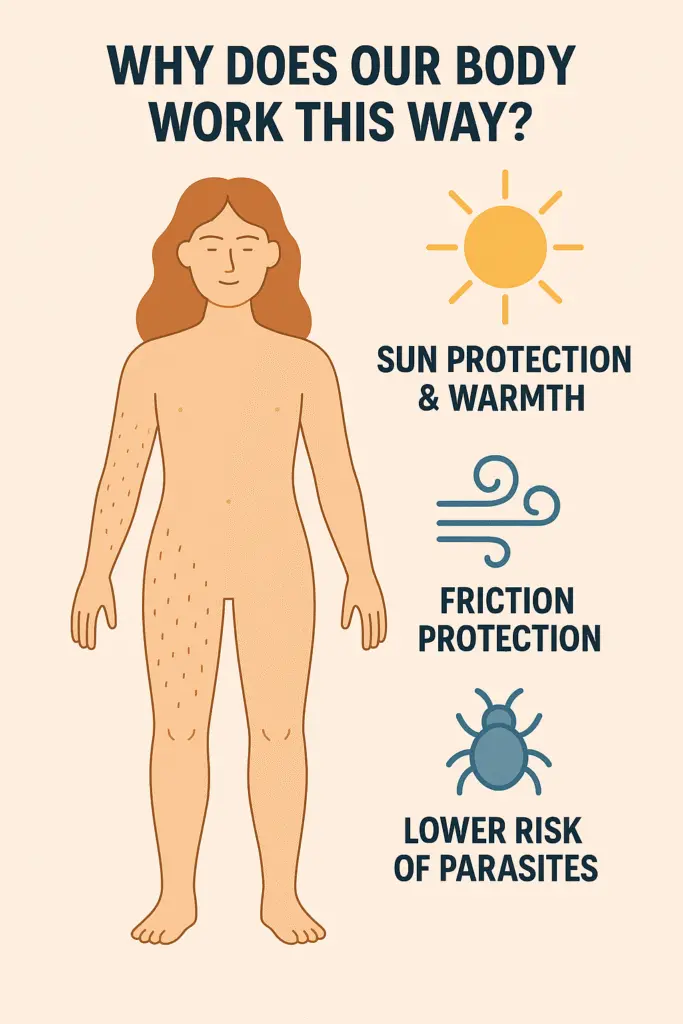
Have you ever paused mid-shave or during a haircut and wondered:
Why does the hair on our heads grow long, but the hair on our arms, legs, armpits, and pubic areas just stops at a certain point?
It’s a curious difference that most of us accept without question — but there’s actually a fascinating biological reason behind it.

The Hair Growth Cycle: Nature’s Timer
All the hair on our bodies, from our scalp to our toes, grows in cycles.
Each hair goes through three main phases:
-
Anagen Phase (Active Growth)
This is when the hair follicle is actively producing hair. -
Catagen Phase (Transition)
Hair growth slows and the follicle begins to shrink. -
Telogen Phase (Resting and Shedding)
Hair stops growing and eventually falls out to make room for new hair.
The Key Difference? It’s All About Time
The secret lies in how long the anagen phase lasts in different parts of the body.

👉 Scalp Hair: Long-Term Growth
The hair on your head can stay in the anagen (growth) phase for 2 to 7 years or even longer.
That’s why it can grow very long — if you never cut it, your hair could potentially reach your waist or even further.
👉 Body Hair: Built-In Stop Limit
The hair on your arms, legs, armpits, and pubic areas has a much shorter anagen phase — usually just a few weeks to a few months.
Once the growth phase ends, the hair stops growing and naturally falls out when its cycle is complete. That’s why your body hair stays short even if you never shave.
Why Does Our Body Work This Way?
It’s believed to be an evolutionary advantage.
Humans likely retained long scalp hair for sun protection and warmth, while shorter body hair helped with:
-
Better temperature regulation in hot climates
-
Lower risk of parasite infestations
-
Less friction and drag during movement
In other words, we evolved to grow hair where it helps us most and limit it where it’s unnecessary.
Fun Fact: Eyebrow and Eyelash Growth
Ever noticed your eyebrows and eyelashes also stop growing?
That’s because they have an extremely short anagen phase — sometimes just 30 to 45 days.
It’s nature’s way of giving us protective features without letting them get in the way of our vision!
Can Supplements Help Grow Hair Longer?
While genetics and the natural hair cycle set the limits for how long hair can grow, good nutrition plays an important supporting role in hair health.
Some nutrients commonly linked to healthy hair include:

-
Biotin
-
Zinc
-
Iron
-
Vitamin D
-
Omega-3 fatty acids
If you have a deficiency in these, supplements may help improve hair strength and reduce breakage. However, taking supplements won’t extend the natural growth phase or make your hair grow faster unless you truly lack these nutrients.
For best results, it’s always wise to check with a healthcare professional before starting any hair growth supplements.
In a Nutshell
So next time you wonder why you don’t need to trim your arm hair regularly but spend a lifetime managing your head hair, remember:
It’s all thanks to the natural timers built into our hair follicles.
Some hairs are meant to grow long; others know when to stop. PRIME

